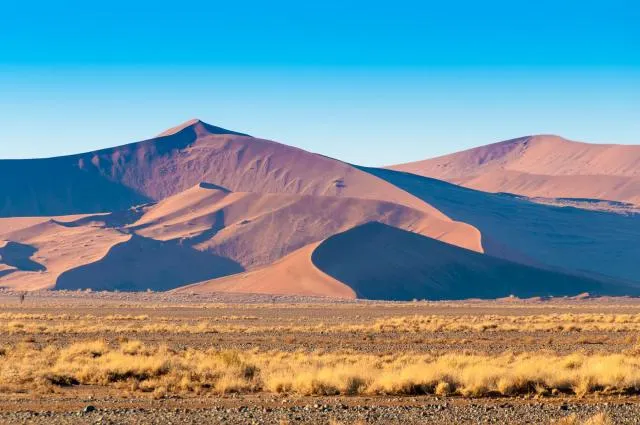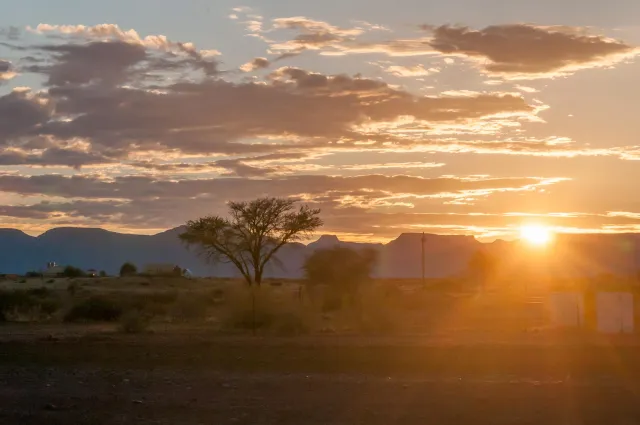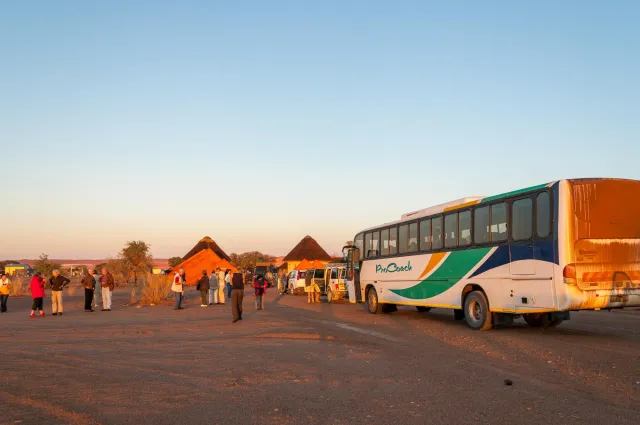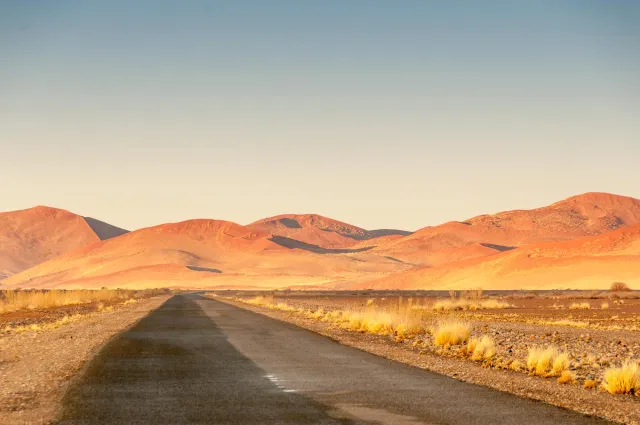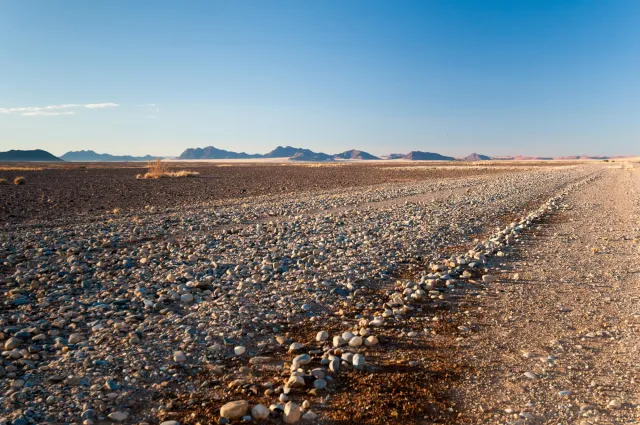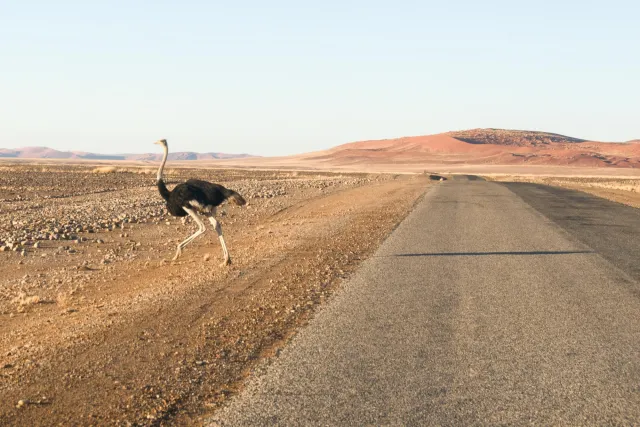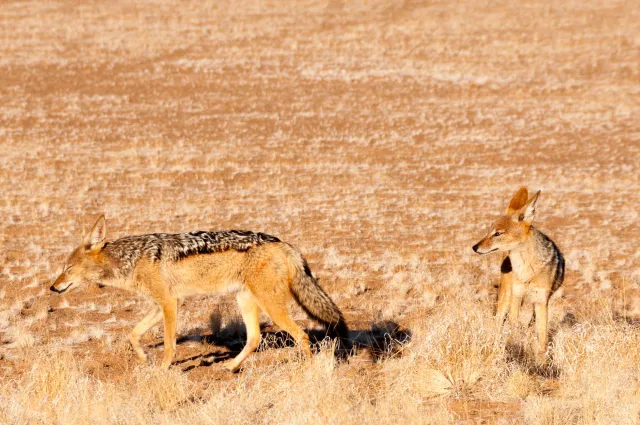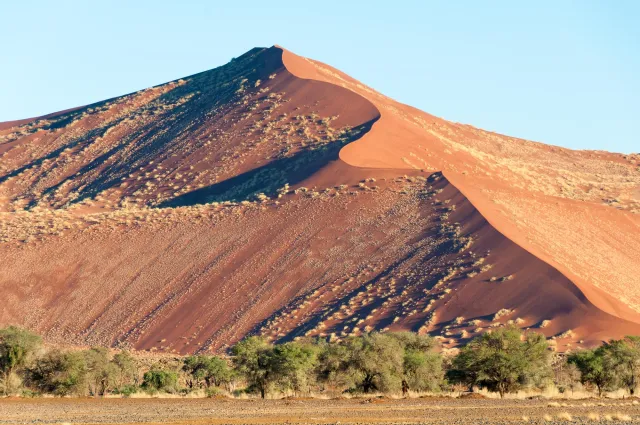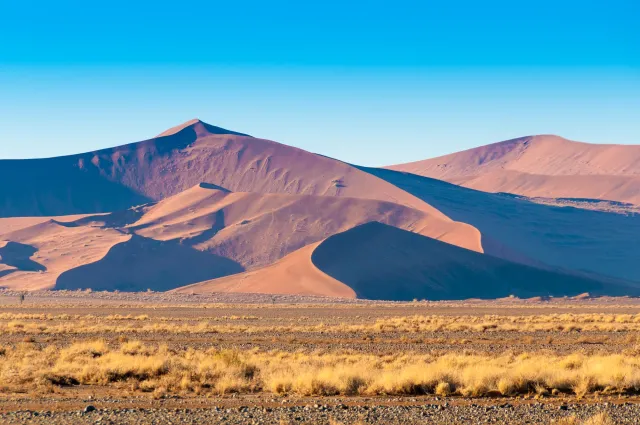The Namib Desert shows many superlatives. It is e.g. the oldest desert in the world. Depending on the point of view, the hour of its birth can be located 120 million years ago, with the formation of today's huge dunes dating back 2 million years ago.
The desert covers a huge area on the west coast of Africa of around 2,000 km in length and around 160 km in width, which extends from the famous Skeleton Coast in the north to the Walvis Bay in the middle and finally to the diamond mining area in the south of Namibia.
This post shows photos of our first stage to get to the mighty dune 45, which is 45 kilometers from the park entrance at Sesriem towards Sossusvlei and is about 170 meters high. Depending on the position of the sun, air and sand temperature, the dunes shine in the most magnificent colors.
However, if you want to photograph their contours and shadows, then you have to get up early because you have to overcome two hurdles before you reach the dune. On the one hand, the access to the desert in Sesriem is opened quite early, but it takes some time until you are finally cleared and allowed to drive in the desert. If you are late, you have to line up in the back and then it can take time. We were the third vehicle in the row and far ahead of the buses and day trippers.
The second hurdle is the journey itself, because at least 45 km have to be mastered, on which there are all kinds of things to see in order to reach the dune 45, which you can climb up along a fixed path. If you are unlucky, you will only be at the top when the sun is at its zenith and the contours of the dunes are beginning to blur. And finally you want to go further to Sossusvlei to see "Big Daddy" the highest dune with a height of over 380 meters. This takes time and, in the last few kilometers, also an off-road vehicle that you also have to steer through sand.
